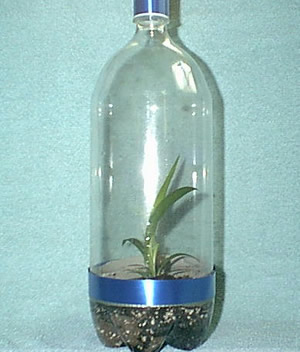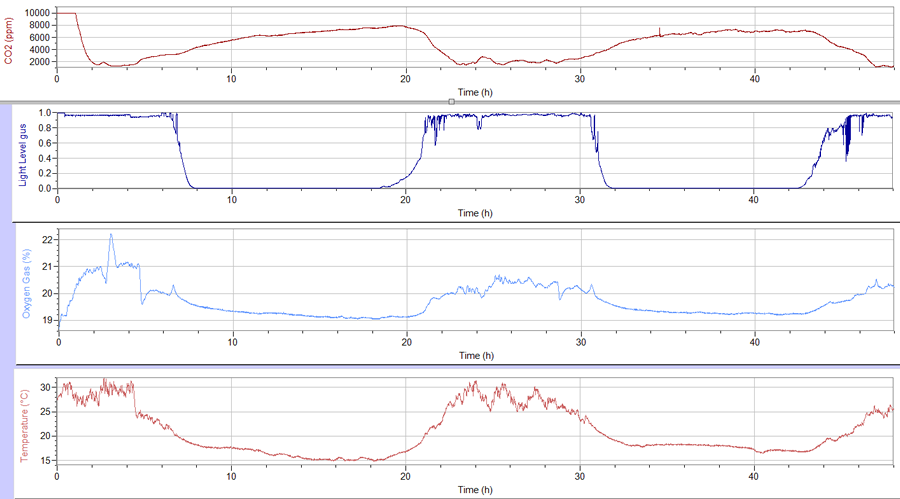
Construct a closed ecosystem using a 2.0 L bottle, as shown on the right. You may wish to include a collection of insects and plants or just plants.
Place the terrarium in a bright spot away from direct sunlight. Using a range of dataloggers record the levels of carbon dioxide, oxygen, light intensity and temperature over a 48 hour period.
Two examples are shown below.

Terrarium A - contained 2 small plants and 5 crickets

Terrarium B-contained moss and 2 worms.

a) Describe the process of photosynthesis by writing a chemical equation. Include energy in the approprioate side of the equation
b) Describe the process of cellular respiration by writing a chemical equation. Include energy in the approprioate side of the equation
c) What do you notice about the two equations?
a) Discuss trends that are obvious.
b) Relate these trends to the process of photosynthesis and celluar respiration.
a) Does this hypothesis need revising? Explain how.
b) What must be constantly supplied to the terrarium? Explain why.
c) Why do organisms not die without fresh air and water?